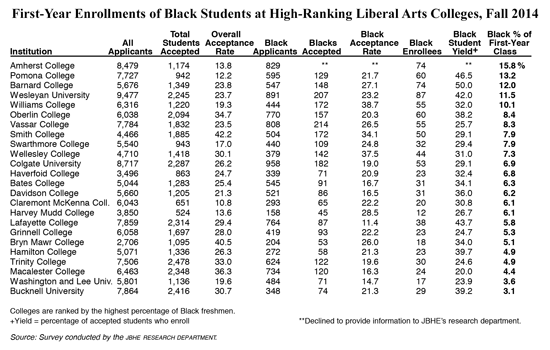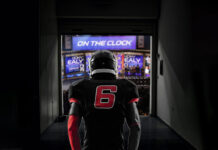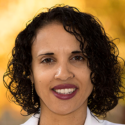![]() For 21 years JBHE has collected black student admissions data on the highest-ranked liberal arts colleges. Over this long period, there have been eight years when Amherst College in Massachusetts reported the highest percentage of Black first-year students. In fact, Amherst has led the rankings for the six of the past seven years. On six occasions, Wesleyan University in Middletown, Connecticut, had enrolled the highest percentage of Black first-year students. Williams College has also been a consistent performer in attracting a large group of Black first-year students and has consistently been at or near the top of the rankings.
For 21 years JBHE has collected black student admissions data on the highest-ranked liberal arts colleges. Over this long period, there have been eight years when Amherst College in Massachusetts reported the highest percentage of Black first-year students. In fact, Amherst has led the rankings for the six of the past seven years. On six occasions, Wesleyan University in Middletown, Connecticut, had enrolled the highest percentage of Black first-year students. Williams College has also been a consistent performer in attracting a large group of Black first-year students and has consistently been at or near the top of the rankings.

This year, Amherst College once again holds the top spot in our survey. There are 74 Black first-year students at Amherst this fall. They make up 15.8 percent of the first-year class. This is largest percentage of Black first-year students at any of the high-ranking liberal arts colleges in the 21 years that JBHE has conducted this survey. A year ago, there were 57 Black first-year students at Amherst. They made up 12.2 percent of the entering class. Two years ago, Amherst dropped to fourth place in our survey with an entering class that was 10.3 percent Black.
Making substantial progress this year was Pomona College in Claremont, California. There are 60 Black first-year students at Pomona this year, making up 13.2 percent of the entering class. Last year, Black students made up 8.8 percent of the entering class at Pomona. Joel A. Hart, interim associate dean of admissions at Pomona told JBHE that “we had a modest increase in the number of Black applicants this past year, but we saw a dramatic increase in enrollment for Black students. We changed some of the things we do when we recruit, and we rethought our yield programs altogether last year.”
Barnard College in New York City has 74 Black students in its entering class. They make up 12 percent of all incoming students. This ranks Barnard third in our survey, its highest ranking in the history of the JBHE survey. Last year, there were 60 Black women in the Barnard entering class, making up 10.3 percent of the first-year students. Two years ago, Barnard was in 11th place in our survey with an entering class that was 7.3 percent Black. Barnard was helped this year by a high Black student yield of 50 percent. This was the highest yield among the high-ranking liberal arts collegs in our survey.
Wesleyan University, which as stated, has led our rankings on six occasions including two years ago, ranks fourth in this year’s survey. There are 87 Black freshmen at Wesleyan this year and they make up 11.5 percent of the entering class. Two years ago when Wesleyan led the rankings, Blacks were 11.3 percent of the entering class.
As stated, Williams College has been a consistent performer and this year is no exception. There are 55 Black first-year students at Williams this year. Williams ranks fifth in our survey with a freshman class that is 10.1 percent Black.
Oberlin College in Ohio, a liberal arts institution with a long history of providing educational opportunities for African Americans, ranks in sixth place this year with an entering class that is 8.4 percent Black, down from 9.5 percent a year ago.
Vassar College in Poughkeepsie, New York is the only other liberal arts colleges in our survey where Blacks are 8 percent or more of the entering class.
A Note on Methodology
Before we continue with the results, it is important to mention how the U.S. Department of Education collects data on the race of undergraduates. Before the change was made several years ago, students who reported more than one race (including African American) were included in the figures for Black students. This is no longer the case. Thus, students who self-identify as biracial or multiracial with some level of African heritage are no longer classified as Black by the Department of Education.
JBHE surveys have always asked respondents to include all students who self-identify as having African heritage including those who are actually from Africa. JBHE has always maintained that biracial, multiracial, and Black students from Africa add to the diversity of a college campus. And including these students in our figures offers college-bound Black students a better idea of what they can expect at a given college or university. In order that we can compare our current data to past JBHE surveys we have continued to asked colleges and universities to include all students who identify themselves as having African heritage.
Some colleges who have not responded to our survey are insistent on reporting only data that is compatible with the Department of Education reporting requirements. They are reluctant to report data to JBHE because their numbers of Black students will be lower than colleges and universities that include biracial and multiracial students with African heritage in their figures.
Liberal Arts Colleges: Short-Term Gainers

Now we turn to a comparison of this year’s results with the data from last year. For the 24 colleges for which we have data in both 2013 and 2014, only 10 colleges posted gains over last year in black enrollments. Fourteen colleges showed a decline.
Washington and Lee University in Lexington, Virginia, posted the highest percentage gain in Black first-year students. But this is due to a very small number of Black students. In 2013, there were only 9 Black first-year students at Washington and Lee. This year there are 17. Despite the large percentage gain, Washington and Lee remains near the bottom of our overall rankings with a first-year class that is 3.6 percent Black.
Pomona College showed a 71.4 percent gain in Black first-year students. Other liberal arts colleges with significant percentage increases in Black first-year students are Amherst College, Barnard College, and Hamilton College.
Liberal arts colleges that showed significant declines in Black first-year students were Bates College in Maine, Grinnell Colleg in Iowa, and Lafayette College in Pennsylvania.
Black Acceptance Rates at Liberal Arts Colleges
Acceptance rate data is a closely guarded secret at many high-ranking universities. But most of the nation’s leading liberal arts colleges are willing to disclose this information. This year, Amherst College, who had the highest percentage of Black first-year students was the only high-ranking liberal arts college that declined to provide its Black student acceptance rate.
Two years ago, for the first time in the history of the JBHE survey of liberal arts colleges, more responding colleges had a lower acceptance rate for Black students than their overall acceptance rate compared to the number of colleges that had a Black acceptance rate that was higher than their overall rate. This was true again last year and this year makes the third year in a row.
While no firm conclusions can be made, the fact that for the past three years there are now more colleges with overall acceptance rates that are higher than Black acceptance rates, causes one to wonder if there has been some curtailment in colleges’ consideration of race in admissions decisions.
At nine of the 23 high-ranking liberal arts colleges for which we have data, the Black acceptance rate was higher than the acceptance rate for all applicants. In some cases the differences were very large. At Williams, the Black acceptance rate of 38.7 percent is double the rate for all Williams students, which stood at 19.3 percent. At Claremont McKenna College in California, the Black student acceptance rate was more than double the rate for all students.
At 14 of the 23 high-ranking liberals arts colleges for which we have data, the Black acceptance rate was lower than the rate for all students. At some, the differences were substantial. For example, at Macalester College in Minnesota, 36.3 percent of all students were accepted but only 16.3 percent of Black students were admitted.












Why wasn’t Middlebury College included in this year’s survey?
They were asked to but did not reply to our survey.
Good question, Charles!
I think the acceptance numbers are terrible. How many black students are being rejected because the schools have limited financial aid to give? It would be helpful to understand if these kids are being rejected because of poor SAT and GPA scores. What is the profile of the kids who are being admitted?